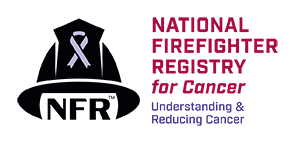How the National Firefighter Registry (NFR) for Cancer Works

There have been no comprehensive, national data sources in the United States for studying the relationship between firefighting and cancer among all firefighters —until now.
The National Firefighter Registry (NFR) for Cancer will help researchers to better understand and reduce cancer in firefighters by matching the information provided by participating NFR firefighters with cancer diagnosis information from state cancer registries. This matching process will allow NIOSH to study the relationship between firefighting and cancer outcomes over time.
How the NFR will help protect firefighters from cancer
STEP
1
Firefighters sign up for the NFR
Firefighters provide their information through NFR’s secure website and questionnaire. This includes name, date of birth, and information about work, exposures, health, and lifestyle. NIOSH researchers then create and store the firefighter’s profile in the NFR database.
STEP
2
NIOSH captures work history details
When firefighters enroll, they will have an opportunity to provide details about their work as a firefighter. NIOSH will also seek to obtain work history records from fire departments. This information can be used to better understand firefighters’ exposures and how they may be related to cancer.
STEP
3
NIOSH researchers match firefighter profiles with cancer information
NIOSH researchers match a firefighter’s NFR profile with any current/future cancer diagnoses by connecting with state cancer registries. This makes it possible to study the relationship between firefighting and cancer over time. Any cancer diagnosis information that is linked to an NFR participant is protected by the same safeguards as other NFR data under an Assurance of Confidentiality.
STEP
4
Stronger evidence can lead to improved cancer prevention measures
Combining information from firefighters across the U.S. will help researchers better understand cancer and its risk factors in the fire service, which could ultimately help reduce cancer among firefighters for generations to come.
